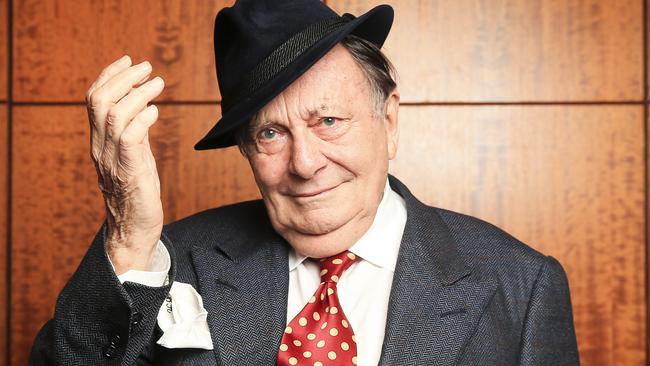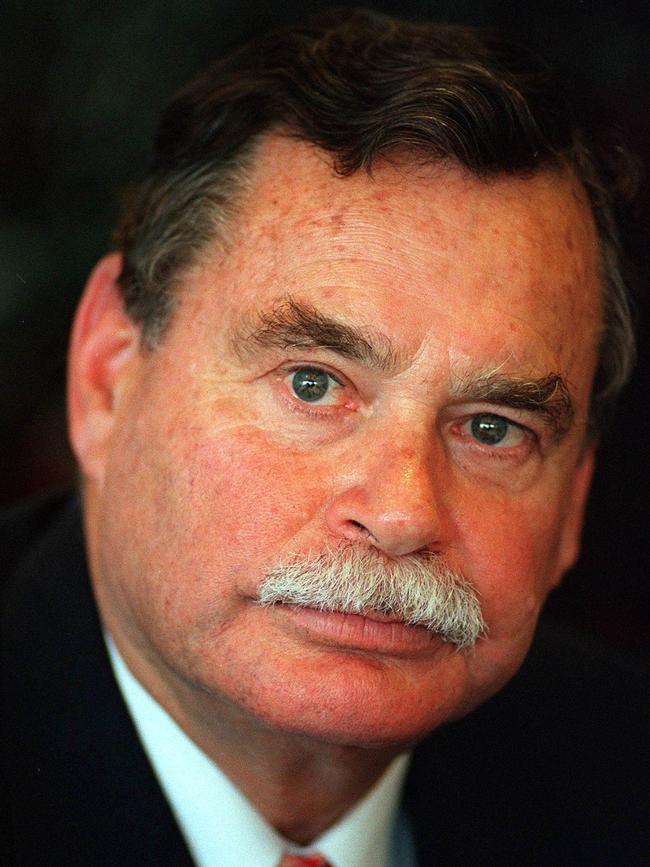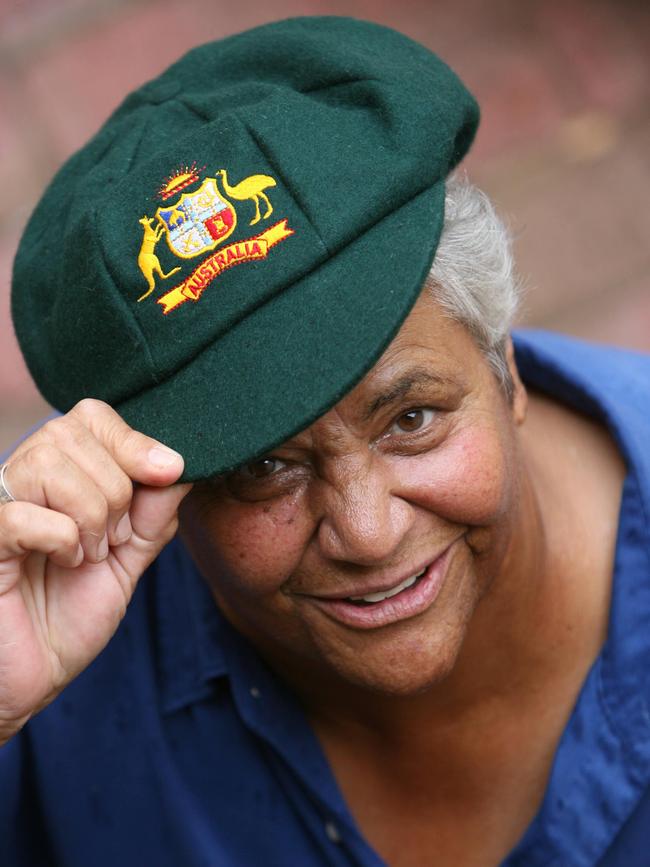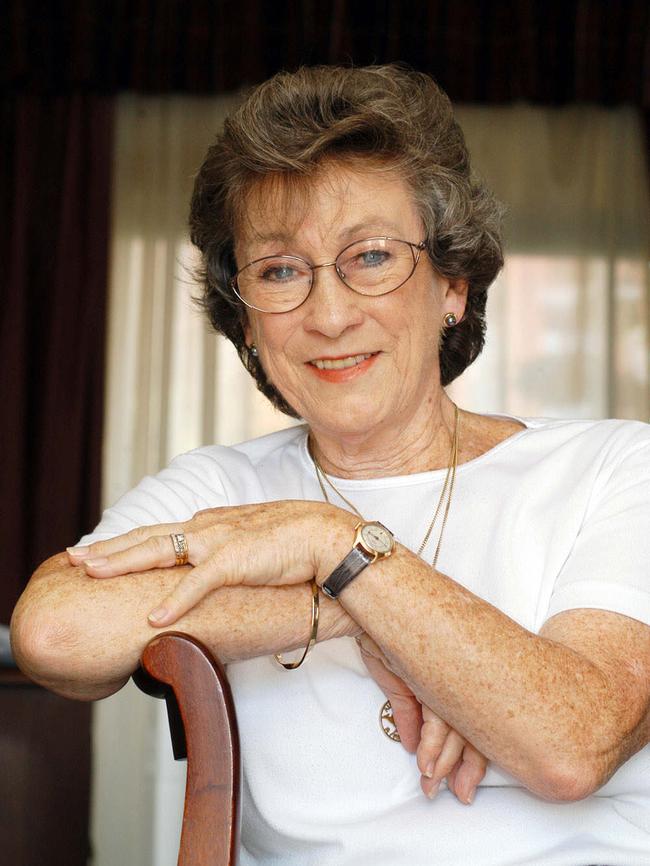Famous farewells of 2023
Notable figures in sport, politics, science, fashion and exploration died this year, and one ‘exhibitionist’ who held up a mirror to the absurdities of Australian life.

On April 22 Australia lost three entertainers who, for decades, had held up a mirror to until then unobserved absurdities of Australian life: One was the enduring housewife superstar Dame Edna Everage; the second was the obese, lecherous drunk Sir Les Patterson, a legendary Minister for the Yartz; the third was, of course, their creator, Barry Humphries.
It took a while, but even Broadway, with the hardest-marking theatre audiences in the world, came around to Humphries’ unique characters observing the human condition with an Australian accent. But it was the evolution of Edna from naive, conservative Moonee Ponds frump to glammed-up, effervescent, purple-rinsed observer of the cult of celebrity that sent her global. That and Humphries’ unmatched wit and ability to develop so much humour on the run that it almost exhausted his audiences. Perhaps only Robin Williams was similarly gifted.
When they were first on stage together, with Williams playing a green-cardless Italian pizza delivery man, Humphries pulled off Williams’ fake moustache and “revealed” his true identity. Humphries sat him down: “We’re both at the height of our powers as artists … My gynaecologist told me the other day that I was at the height of my powers. (Then looking at Williams) I don’t know what yours told you, darling.” For a nanosecond, Williams was stumped, then responded lamely, at least by his standard.
A master at Melbourne Grammar, where well-to-do Victorian families seek to buy a passport for their boys to the upper tiers of the state’s social strata, had it right from early on: “An exhibitionist,” the teacher wrote on the report card of the troubling boy called Humphries who later wrote that he was “self-educated, attended Melbourne Grammar School”. He does appear on the list of Melbourne Grammar alumni – but well down at No.152, far below retired AFL footballer Tom Hawkins and an actor called Jack Martin who has appeared in an episode of Neighbours and one episode of Home & Away. Seems the school never forgave him.
It would not have bothered Humphries. From an early age, he rebelled against the comfortable but tedious monotony of young life in Melbourne’s affluent east. Mostly in the manner by which he led all his long life. He entertained himself dressing up in a box of clothes – a sailor suit, Native American clothes, Chinese costumes. It made him happy and others were amused.
As an adult, once he stopped drinking, he was happier and people were still amused and that’s how it was for the rest of his life.
The one exception was when he was shamefully cancelled by the Melbourne International Comedy Festival that he co-founded, and whose major prize was named The Barry, for making “unhelpful” remarks about transgender people. And that is why the memorial service for Melbourne’s greatest entertainment export was held in Sydney on December 15.
When Australia was divided north and south by the sporting codes of rugby union and Australian football, a national advertiser polled every state to find out if there was an admired sporting name that was universal. They assumed it would be a prominent cricketer. It turned out to be Ron Barassi, who died on September 16.

The Victorian’s sporting record was remarkable and – in a competition that has grown from 12 teams to 18 – almost certainly will remain unmatched: six premierships as a player at Melbourne, two as coach of Carlton and two as coach of North Melbourne, taking the Kangaroos from wooden spoon in 1972 to their first premiership in 1975. When the AFL’s interstate experiment with the Sydney Swans floundered, he was sent north and stabilised the club, which then went on to win its first flag in 72 years – a fitting landmark in the career of a man who understood that Australian rules needed a national audience if it were it flourish.
His father, Ron Barassi Sr, had played in Melbourne’s 1940 premiership side, then volunteered for the army and was sent to North Africa, where he was killed during the siege of Tobruk in Libya.
The life of Adelaide’s Faith Thomas, who died on April 15, was one of extraordinary achievement, not least of which at age 30 playing her final competitive cricket match while four weeks off giving birth to her son.

A few years earlier, on February 28, 1958, she played for Australia against England bearing baggy green No.48 – the first Indigenous Australian to play Test cricket. Indeed, she was the first Aboriginal woman selected for the national team in any sport.
It was another 39 years before another Indigenous player (Jason Gillespie) made the Australian cricket team.
Thomas was also the first Indigenous nurse employed by the South Australian government, and so many women in that state of a certain age bear her name: they weren’t named after a sports star, but for the first person they met – a skilled and caring midwife.
Sisters Heather and Joy McKean had their own radio show on Sydney’s 2KY while still teenagers. The Melody Trail ran on Saturday mornings from 1949 until 1956. Each married rising country music stars: Heather married Reg Lindsay while Joy married David Kirkpatrick – soon to be known to the world as Slim Dusty.

Joy, who died on May 25, became Slim’s stage partner and manager. They recorded 100 albums together, selling millions.
From 1964 and for decades McKean would pack up the family for an annual lap of the country, driving 30,000km and performing at hundreds of venues.
McKean wrote the country classic Lights on the Hill, for which she won the first Golden Guitar award. She and Slim would win 44 others. They had two children, Anne and David Kirkpatrick, both of whom are singer-songwriters. Slim died in 2003.
SIMON CREAN (February 26, 1949-June 25)
Crean, who served two years as opposition leader from November 2001, was a cabinet minister in the Hawke, Keating, Rudd and Gillard Labor governments. While representing the European Australian Business Council, Crean backed Julia Gillard when she challenged Kevin Rudd for the prime ministership and was rewarded with four portfolios including arts and education when she won. He switched sides to Rudd and retired after the 2013 election.
MARY-LOUISE McLAWS (March 17, 1953-August 12)
McLaws, an epidemiologist at the University of NSW, had monitored bird flu in Beijing and had advised Hong Kong during the 2002 SARS outbreak. She knew immediately how bad Covid-19 would be and was first to recommend masks and mandatory vaccinations. Quickly becoming a household name, she also worked at night for the World Health Organisation. Diagnosed with brain cancer, she received an Order of Australia in the Queen’s final honours list.
BILL HAYDEN (January 23, 1933-October 21)
Once a communist and a police guard to the governor of Queensland, Hayden rose to be governor-general of Australia after a celebrated career in the Labor Party during which he was the last treasurer in the doomed Whitlam government, whose landslide defeat in 1975 left him the only Queensland member in the party. Hayden famously fell on his sword to allow the unfettered passage of Bob Hawke to the Labor leadership.
RICHARD WOOLCOTT (June 11, 1927-February 2)
In a lengthy diplomatic career – he was in Moscow when Joseph Stalin died in 1953 – Woolcott earned almost universal political respect. Woolcott drafted prime minister Harold Holt’s landmark speech that said Australia was part of Asia and we must understand and befriend our neighbours. As ambassador to Jakarta he controversially advised Gough Whitlam to accept Indonesia’s annexation of East Timor, which, he said, would proceed no matter our stance.
MICHAEL PARKINSON (March 28, 1935-August 16)
Parkinson never asked hard questions and so snared “ungettable” interviews. Over his Australian years he had Bob Hawke admit his playboy past and Kerry Packer discuss his privileged boyhood and how that had shaped the relationship with his children. His four Muhammad Ali interviews became combative television landmarks. In one Parkinson said: “I’m not going to argue with you.” Ali’s instant reply? “You’re not as dumb as you look.”
ROSALYNN CARTER (August 18, 1927-November 19)
Jimmy Carter met his wife-to-be when he was three. She had been born that day, the daughter of neighbours helped into this world by Jimmy’s mother, Lillian, a nurse. Rosalynn played an involved role during his presidency, even attending cabinet meetings – but never speaking. He said: “There’s very seldom a decision that I make that I don’t discuss with her … to tell her my options and seek her advice.”
FRANK BORMAN (March 14, 1928-November 7)
Astronaut Borman spoke bluntly when watching the Apollo launch from the Oval Office in 1969. He knew the acute dangers of the mission, parts of which could not be rehearsed. Richard Nixon’s speechwriter was shocked and wrote an extraordinary speech in case of disaster – thankfully never uttered – that stated: “Fate has ordained that the men who went to the moon to explore in peace will stay on the moon to rest in peace.”
PAUL-HENRI NARGEOLET (March 2, 1946-June 18)
The wreck of the Titanic had been discovered in 1985, 4000m beneath the Atlantic and 690km southeast of Newfoundland in Canada. Deep-sea explorer Nargeolet, then a French navy commander, was aboard the second submersible to visit the site the following year. He was on his 38th visit to Titanic, aboard the controversial submersible Titan, when, descending and very near the site, it lost radio communications and then imploded, killing all aboard.
HENRY KISSINGER (May 27, 1923-November 29)
On Kissinger’s death Greg Sheridan described him as the most important and consequential American diplomat of the 20th century, and “surely the most distinctive”. Simultaneously secretary of state and national security adviser to Richard Nixon, the polarising Kissinger opened China up to the world while playing it off against the serious strategic threat of the Soviet Union. On turning 100 this year he was welcomed to Beijing as “a friend” by Xi Jinping.
TINA TURNER (November 26, 1939-May 24)
Melbourne boy Roger Davies once managed Sherbet. He moved to Los Angeles, met the recently divorced once-famous Ikette Tina Turner, took over her management and took her out of clubs and into rock arenas with her first Billboard No.1, What’s Love Got to Do With It. The 10 million-selling Private Dancer album won three Grammys and Turner, born Anna Mae Bullock in Brownsville, Tennessee, then starred in Mad Max Beyond Thunderdome.
HARRY BELAFONTE (March 1, 1927-April 25)
With the 1956 hits Day-O (The Banana Boat Song) and Jamaica Farewell, Belafonte’s Calypso became the first million-selling album by a single artist. A friend of Paul Robeson and Martin Luther King, he was the first black artist to powerfully combine music and politics and helped King organise the 1963 march on Washington. He helped fund poor black students who wanted a university education: one was Barack Obama Sr, whose son would become president.
GEORGE PELL (June 8, 1941-January 10)
Conservative Pell was Catholic archbishop of Melbourne, then Sydney, and rose to peak of the Vatican, whose budget he oversaw, and was tipped as a future pope. But in 2018 Pell was convicted of child sex offences and jailed in Victoria. After 404 days’ prison, mostly in solitary confinement, he was freed in a unanimous decision by the full High Court, which ruled that “an innocent person has been convicted”.
MARY QUANT (February 11, 1930-April 13)
With the Beatles and Carnaby Street, Quant was an essential element of the Swinging Sixties pioneering miniskirts and hot pants. The self-taught designer revolutionised fashion as Britain emerged from the post-war years of rationing, then won over the world. Journalist Ernestine Carter wrote of her: “It is given to a fortunate few to be born at the right time, in the right place, with the right talents.”
KEN WARBY (May 9, 1939-February 20)
Warby’s childhood hero was English land and water speed record-breaker Donald Campbell who was killed in 1967 trying to set another speed record. In the mid-1970s, Warby designed and built a speedboat in his backyard. On October 8, 1978, powered by a jet engine he bought for $265 and then repaired, the Spirit of Australia hit 511.1km/h on Blowering Dam, a record that stands to this day.
DICK FOSBURY (March 6, 1947-March 12)
Fosbury changed his sport. Few can claim that. A university engineering student, he perhaps had an insight into the biomechanical advantages of the radical high-jump style he took two years to develop, the Fosbury Flop. He won gold at the Mexico Olympics but never broke the world record. But others would. His opponent in Mexico saw Fosbury’s style and said: “Oh man, what a nutcase here with this guy.”
MONKOMBU SAMBASIVAN SWAMINATHAN (August 7, 1925-September 28)
Indian agronomist Swaminathan finished high school at 15 and then studied zoology and agricultural science. He was fascinated by genetics and he worked at developing a new potato that resisted cold and parasites. He then did the same wheat and rice. His green insurgency changed his country’s attitude to agriculture to “one of pride and confidence rather than one of despair and doom”. He won the 1987 World Food Prize.


To join the conversation, please log in. Don't have an account? Register
Join the conversation, you are commenting as Logout